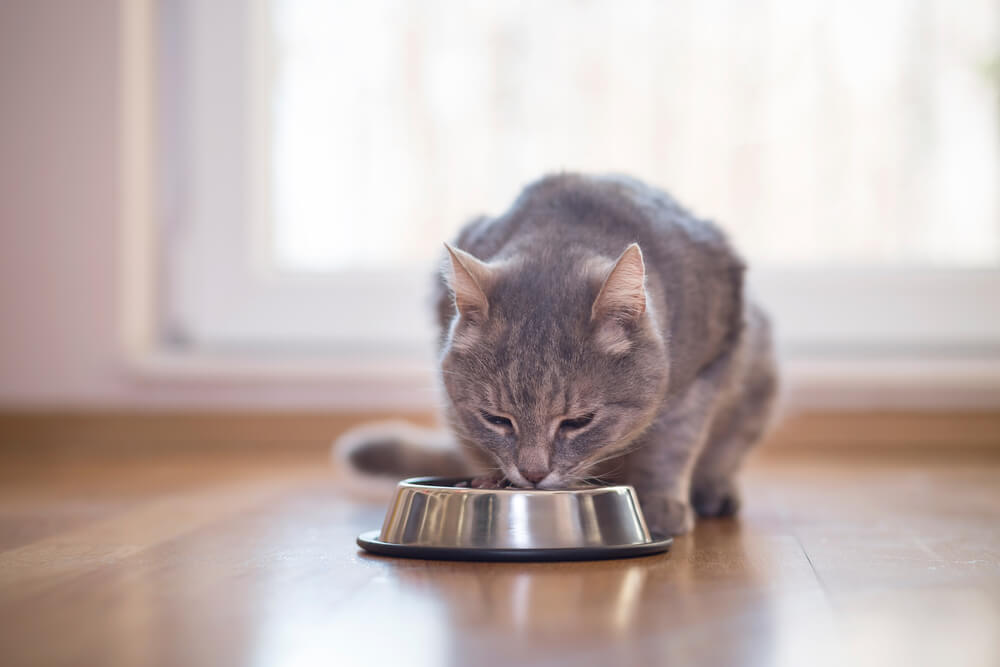Ann Hudson, vice president of Whitebridge Pet Brands, states, “The single most important influence on the natural diet category continues to be the human food market.” Basically, we want to feed our pets what we eat. As people educate themselves more about their own nutrition, they also want better nutrition for their pets. While it’s wonderful to give your pet top-of-the-line foods, you should always consider flashy marketing. Many pet owners choose a pet’s diet based on recommendations from friends and family, Facebook trends, or the latest human diet craze. Understanding the pet food label is key to wading through all the misconceptions. Once you understand labels, you can ask pet food manufacturers the right questions to ensure you make the best choice for your furry friend.
What does the label mean?
Pet food labels can slant consumer perception by splashing bright marketing and trendy keywords across bags of food. Fortunately, pet food regulating bodies ensure manufacturers produce high quality pet foods even when they use marketing gimmicks and buzzwords.
- Association of American Feed Control Officials (AAFCO) establishes the nutritional standards for complete and balanced pet foods. AAFCO doesn’t test, approve, certify, or regulate pet foods. Rather, the association protects consumers by leveling the field of the animal food industry. AAFCO endorses all foods that are nutritionally “adequate” and meet minimum or maximum levels of certain nutrients, but does not single out products that provide optimum nutrition.
- U.S. Department of Agriculture (USDA) has no regulatory authority over pet food, but the agency does certify human-grade foods used in pet products.
- Food and Drug Administration (FDA) is the main body that regulates pet food. The FDA inspects manufacturing plants and ingredient suppliers, investigates consumer complaints, and works with AAFCO to develop and establish nutritional pet food requirements.
- State Department of Agriculture and the FDA have similar responsibilities regarding pet food regulation. Some states perform the same duties as the FDA, but may also inspect pet food labels to ensure they adhere to labeling laws and test pet food for bacteria or guaranteed analysis claims.
Buzz words, such as “natural,” “organic,” and “holistic,” are commonly used to entice pet owners to make a purchase. What do these words mean in terms of pet food?
- Natural foods should consist of only natural ingredients that have not been processed excessively, and foods that avoid preservatives, additives, and artificial colors and flavors. AAFCO provides guidelines for the use of this term on pet food labels.
- Organic foods must follow the same rules the USDA sets for human foods. Organic foods should be free of pesticides, synthetic fertilizers, added growth hormones, antibiotics, by-products, and bioengineering practices.
- Holistic foods typically claim to promote balance by aligning all your pet’s body systems to maximize health and wellness. Any pet food can use the “holistic” label, since there is no legal definition and no FDA or AAFCO regulations.
Questions to ask when choosing a pet food

The ingredient list does not provide the most important information when choosing a pet food. Manufacturers often list ingredients that sound good to pet owners, such as whole foods, and avoid by-products or meals, making no guarantee of ingredient quality. Instead of checking the ingredient list of a promising pet food, dig deeper by asking manufacturers these questions:
- Do you employ a board-certified veterinary nutritionist or other qualified professional to formulate your food? Appropriate qualifications include a PhD in animal nutrition, or board-certification by the American College of Veterinary Nutrition or the European College of Veterinary Comparative Nutrition. Beware of a company that claims to have a pet food nutritionist on staff. A mere 100 hours of online study grants “certification” as a canine pet nutritionist.
- Do you own the plant where your food is made to ensure strict quality control? Many small, boutique food companies do not own their manufacturing plant, but share the facility with numerous other companies.
- What quality control measures do you take? Look for:
- Certification of a manufacturer’s procedures
- Ingredient testing
- End-product testing of nutrient contents
- Pathogen and aflatoxin testing
- Materials risk assessments
- Supplier audits
- Do you test your food with AAFCO trials? Feeding trials are the gold standard for proving a pet food provides optimum nutrition. At the minimum, a pet food should meet the AAFCO nutrient profiles by analyzing the finished product, instead of just looking at the recipe.
- Do you conduct any research? Is it published in peer-reviewed journals?
- Can you provide the average analysis of any nutrient I ask for?
- Can you provide the number of calories in a given amount of food?
If your pet food manufacturer can’t answer these questions, consider switching to a brand that will provide your pet with better nutrition. If you have trouble contacting a manufacturer or making a diet decision, give us a call and we will be happy to help you choose the best food for your pet.
